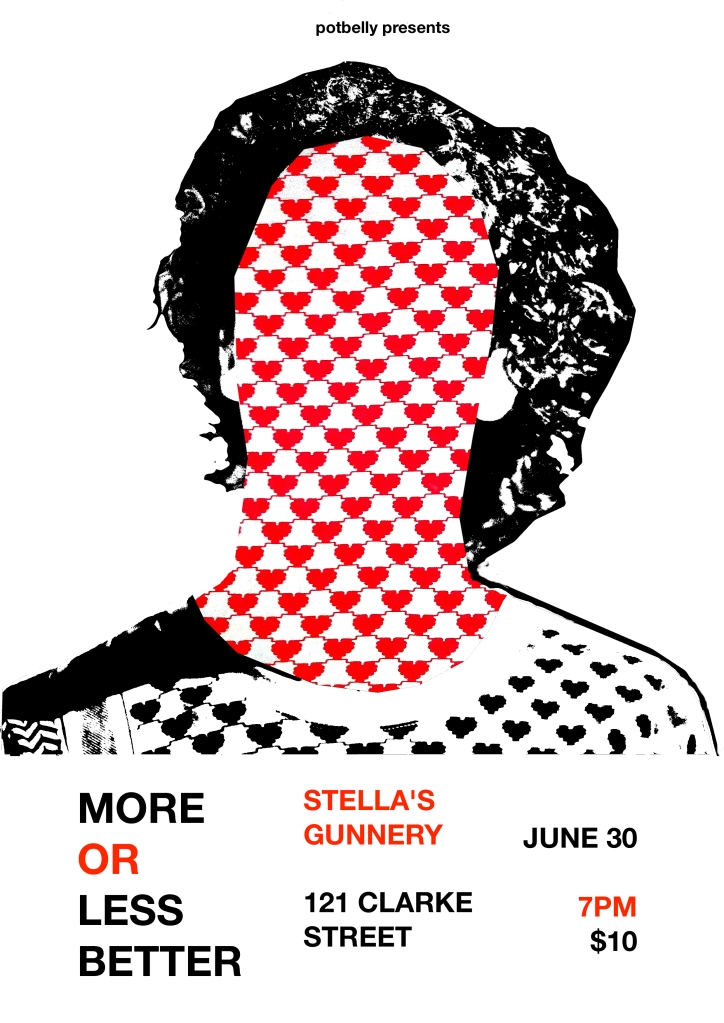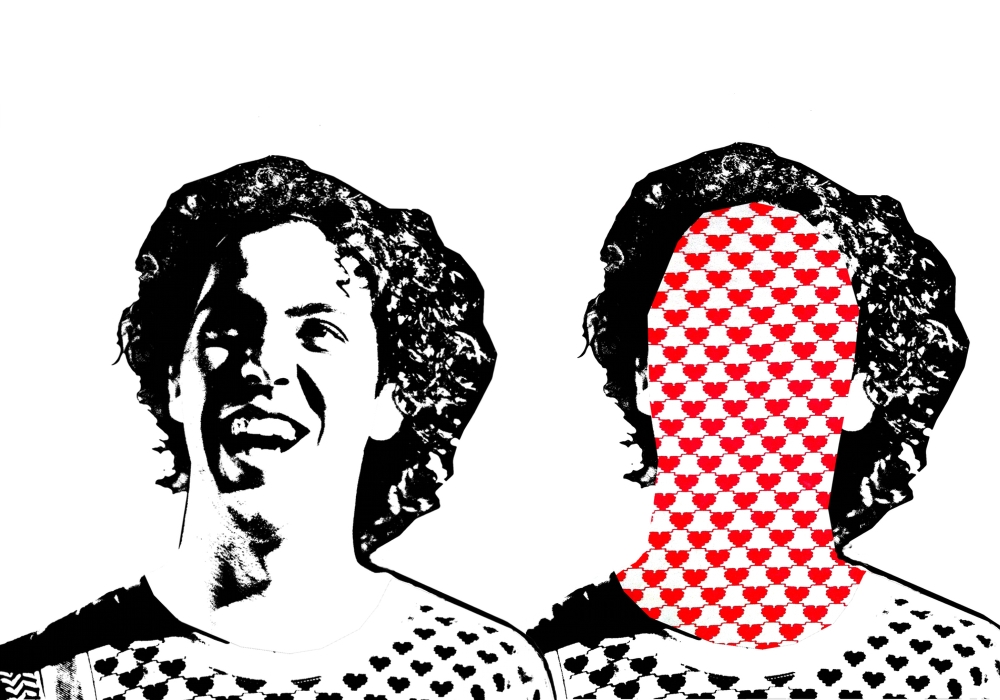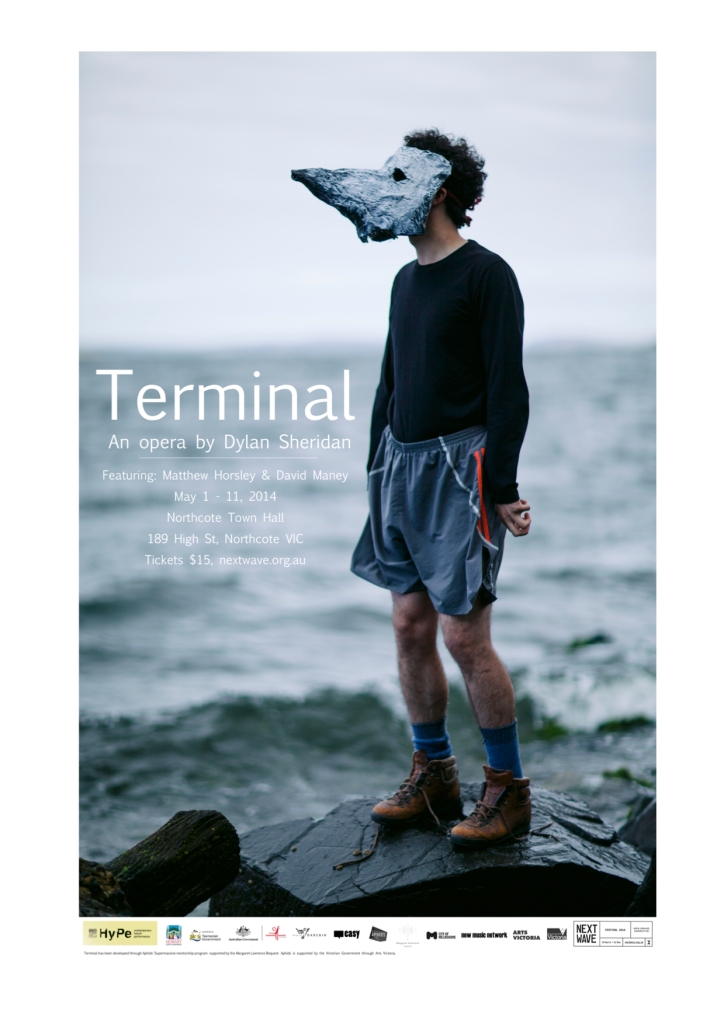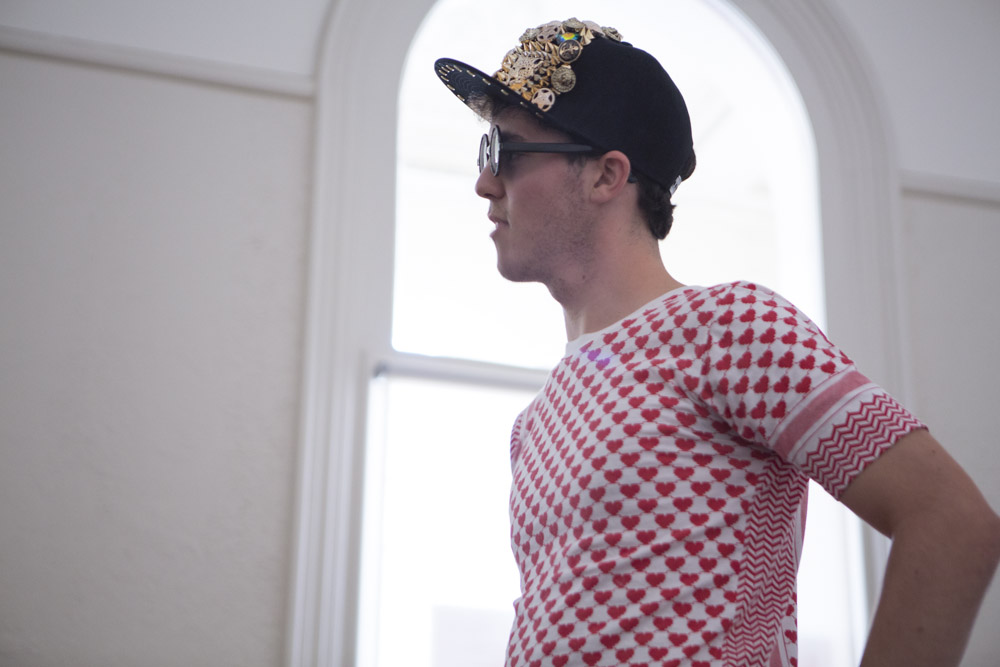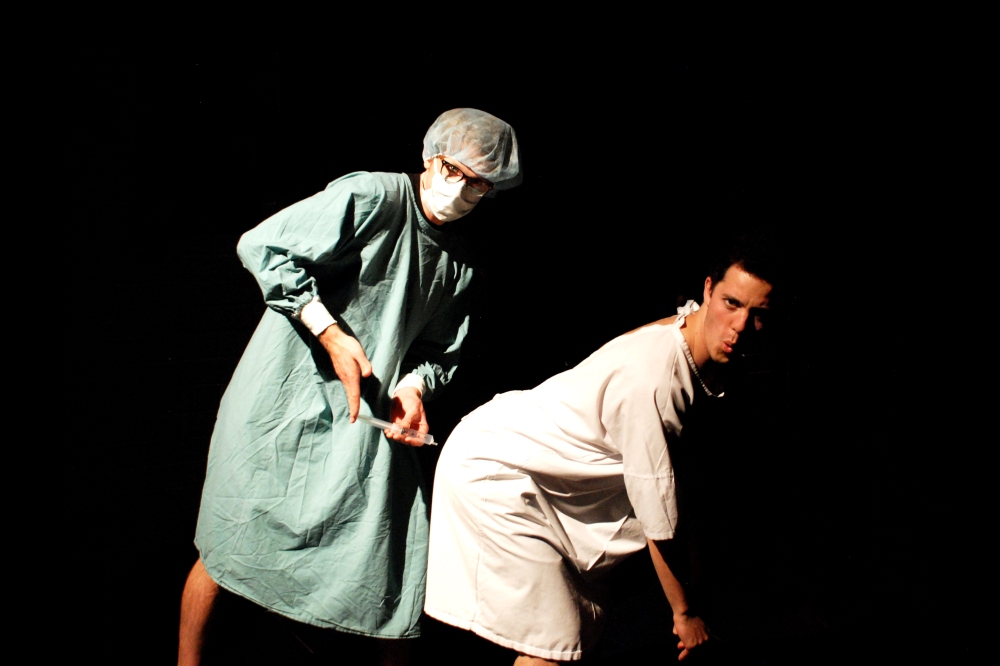More or Less Better, 2016 Adelaide Fringe
MORE or LESS BETTER
This Light That
THIS LIGHT THAT
After Hildegard Von Bingen
It is.
It is in.
It is in this.
This light.
This light that.
That I.
Light that I.
Light that I sometimes.
I sometimes.
I sometimes.
I sometimes see.
Is it? Is it just now?
In this light that I sometimes see?
Though.
Though not.
Often.
Not often, another.
Another light.
Another light, is it?
That I.
Light that I.
That I.
Call. Call. Call.
I call.
Just now.
I call the Living.
I call the Living Light.
Is it? Is it?
I call.
When?
When and how?
And how.
How I.
How I see this.
This, I cannot say.
How I see I cannot say.
But as long.
As long as I long
So I got in a fight tonight… The Club 3.0, New Heroes, Next Wave festival
Spoilers.
So I got in a fight tonight.
I got in a fight with a guy named Hayden. I didn’t ask how he spells his name before we started throwing punches. And now I’m sitting here at my computer with ice on my forearms while I type. None of the punches that hit my body hurt but the ones that I blocked do.
Before I begin I should go back.
I played sports when I was younger: hockey and baseball. By country SA local standards I was quite good. We won grand finals and I won league best and fairest.
Up until the age of twelve I was a sore loser. I remember crying after a game of two-on-two basketball at lunch-time; trying to talk a good game between sobs while the other kids teased me. I remember the coolness of the water as I tried wash and disguise the tears. I still remember the names of the opposing duo. Joe Pinneri. Clark Morandin.
I’m the youngest of three siblings. My brother is three years older than me. Before going into The Club I’d talked to people about fighting my brother. I always matched his 80% with a 100% effort. I remember the day I finally beat him: Summer. Henley Beach, Adelaide. We set up this rather banal game of water rugby. You throw a bottle of water into the waves and the person who retrieves it has to bring it back to shore. The other person has to stop them. Tackle. Kick. Pull. The weightlessness of the water meant we could throw each other around without fear of injury. It was a test of strength, endurance, will. There was no score. Just a look in his eyes when he was on his haunches and I knew he’d given 100% and lost. I think I’d also just watched Gattaca for the first time. This is a movie I still quote, especially when I’m out on a morning run and it starts to rain:
How are you doing this Vincent? How have you done any of this?
…
You wanna know how I did it? This is how I did it, Anton. I never saved anything for the swim back.
Hayden and I were the last fight of the night. The rules were simple:
No head.
No groin.
When someone says ‘stop’ you stop.
When someone forfeits the fight is over.
Later on other participants would say that the New Heroes were urging us on, but I had already decided I would throw at least one punch. In all the previous fights, whether it was man-on-man, woman-on-woman, or woman-on-man, it was a wrestle until exhaustion.
Hayden looked a little pale, a little pudgy, baby fat really, although he was older than that. I was wearing my Boston Red Sox #getbeard t-shirt. I had eaten a Date and Banana bar in the car on the way to the Meat Market.
I asked if we could talk during the fight. Yes. As we danced around each other I asked Hayden:
Do you have any brothers?
Yes. Older. You?
Older as well.
How much older?
Three years.
Me too. I always used to give a 100% in fights.
He used to wop me. He was taller, a bit like you.
I said you could talk not have a conversation.
So we clenched our bare fists and went from there. What really happened? There were moments.
The New Heroes had talked about seeing the change in someone while they were fighting. The opening of the show was a re-telling of Fight Club (the movie). The book, along with Frederic Biegbeder’s 99 Francs had been my two chosen texts for my English Major Study in high school. I could quote the rules before the New Heroes said them: the first rule of fight club is do not talk about fight club… etc
It’s strange to fight someone and not be able to hit them in the head. My brother and I often devised games where this was how you scored points. So we tried to hit each other. Hayden had a much better punch than me. He threw himself into a lunge before hitting me. When we wrestled and I was fighting to keep both feet on the ground and not be thrown I became aware of the people around us watching. When we went back to boxing I looked at his torso with an occasional glance at his eyes. Why am I avoiding eye contact, I thought.
My brother n’ I had a moved called ‘working the chin’, but no head action.
We both dropped our arms by our side. I’m not sure who led the exchange but we preceded to let the other take a free punch or three. One of mine struck him on the upper abdomen which made an impressive sound and drew an pooh from the crowd.
Now we’ve established we can’t hurt each other…
We were comfortable. Hayden was a southpaw but changed to a regular stance. I punched him on the upper arm a couple of times then on the third punch came in real slowly and he moved away. We backed away. He quickly feigned to come at me. I half-reacted.
What was happening? Where was the physical rage? I was barely warm.
Hayden came with a flurry of Mortal Combat combination punches, mashing the controller buttons. I was standing in the corner and trying to grab his fists. Why? We backed away and looked at each other. Was it time to stop? We mumbled something and after a few punches got into a wrestle. I managed to get him on the ground laying on his side, my right hand pull his left arm across his chest while my left hand pinned his right wrist to the mat and my full weight was on his ribs.
You’re heavy.
He couldn’t get up unless I got off him.
Stop?
Stop.
If it was a points decision I would have given it to Hayden. He threw and landed more punches. But I pinned him. So I won, right?
The New Heroes had said in a previous fight that there were no winners. But if I hadn’t ‘won’ how long would the fight have gone on? I didn’t have the physical rage. I didn’t even attempt to reach back and find it. But I still wanted to win. If he’d hit me in the head it might have been different. My Dad always told me the skill in boxing is to be able to take a blow to the head and not get angry. If you get angry you lose.
In the next exercise we were asked to pick a word that we lived by. They showed us the most popular choices. Passion. Happiness. Money. Me. Love. Were there any others? Hands up. Me.
Contradiction.
Why… what do you mean?
Well, something I did a year ago I might not do tomorrow.
Was their contradiction in your day?
Today?
Yeah.
Yeah.
There was contradiction in his fight.
The next section was a monologue about have tos and a photo slide presentation of all the great works the members of The Club had gone out and… but my thoughts were elsewhere. Physical rage. Intellectual rage. Emotional rage. Can you partition rage? What is rage, really? Why was I hoping a fight with a stranger would rekindle the rage? Why did I want it to?
One of the New Heroes shared his word which he lived by: frogs. He told the ending of the filming Magnolia when the frogs fall from the sky. He quoted quiz kid Stanley:
This happens. This is something that happens.
Beautiful and redeeming for Stanley, but in the movie another frog falls from the sky, through a skylight and stops Jimmy Gator, quiz show host, philanderer, possible pedophile and terminally ill man, from shooting himself in the head. Does that frog redeem Jimmy Gator?
The ice packs on my forearms are warm.
Tomorrow… today, I have a dance audition followed by lunch with my Dad. After that is Mattias’ percussion show, Fluvial, then two performances in the evening as The Rat in a dream opera.
I am Jack’s… contradictions?
This writing was written on Friday [fight] night, after the fight and before bed.
The Club 3.0 is part of Next Wave festival 2014. May 1-11.
This post does not recommend or advocate violence.
Terminal | an opera, Next Wave Festival
Dear Loyal Subjects,
Not so long ago composer Dylan Sheridan had a dream about a rat.
THE RAT bit his finger and wouldn’t let go.
And now that dream is manifest in TERMINAL | an opera… as part of the Next Wave festival.
Come join THE DREAMER and THE RAT at Northcote Town Hall from May 1-11 (details below)
Yours Sincerely,
THE RAT xo
More or Less Concrete, Tim Darbyshire, Arts House [re-post]
Below is a short write-up of impressions from More or Less Concrete, seen in April, 2012. A Q&A followed this performance.
*Contains spoilers*
An unnerving creation of evolution.
In Antony Hamilton’s recent production at the Arts House, Black Project 1, there was an ambiguous gesture towards evolution. The bodies, dancing in unison, travel through a post-apocalyptic world, removing the grime of the fall-out to reveal a landscape of lines: ritual circles, sharp peaks and chaotic grids. They move from right to left.
Tim Darbyshire’s More or Less Concrete also evolves, although it is far more dispiriting than Black Project 1. The three bodies are born in near darkness at the back of the room. There bodies are contorted and obscured — a mass of flesh. The only sign that this thing (to describe it as human would be to hold out hope) is a mumbling of words and indistinct voices which the audience can hear through the headphones provided.
At times the movement is percussive, as if instinct were drummed through the bodies. When they dance in unison it is upset or counter-pointed by the sound of the breath, the squeak of flesh on rubber, the rustling of limbs in blue suits. There is the intimate sound of breathing and the survival of the breath through grunts and moans as it is performed. The density of sound matches the intensity of movement but is often made through unnatural constraints of a breath to match the movement. Even the dancers panting after a waterless synchronised swim becomes uneasy to the ears.
The only obvious manipulation of sound is towards the end of the performance when one of the dancers threatens to reveal the flesh beneath his blue suit. The slow unzipping is looped, slowed down, sped up, like rain, or stretching rubber, at times sounding like applause, as the bodies return to the darkness, back from whence they came. A heavy silence remains, unable to be broken by applause until the dancers return to the stage to take a bow.
Where Black Project 1 offered unison and partnership in desolation, More or Less Concrete offers flesh devoid of thought. Instinct remains and muscle memory echoes on. It is the breath under different conditions and, as Darbyshire said afterwards, “a different way of being inside”.
An Unsensible Afternoon: 247 Days, Chunky Move
Sincerity trapped himself in contradictions that de-bunked the Revelation, namely that there is no structure to dancing with this shit of the soul.
&
“Look man, we’d probably most of us agree that these are dark times, and stupid ones, but do we need fiction that does nothing but dramatize how dark and stupid everything is?”, Wallace tells Larry McCaffery in Conversations with David Foster Wallace. “In dark times, the definition of good art would seem to be art that locates and applies CPR to those elements of what’s human and magical that still live and glow despite the times’ darkness.”
&
A mirror is offered to us. It is not on a human scale. Does it look like me? It contains multitudes.
Is it inhumane?
&
For me human volition coming only from thoughts is not right. Human beings are just like pinballs, bouncing around and off the walls: No independence and very visceral and passive. This is precisely why I portray people as “imitations” of humans, and generate lots of possible hypotheses through my plays.
– Shu Matsui, in interview with Kyoko Iwaki, from Tokyo Theatre Today
&
She measured her weight by starting at the bottom of the cage and counting as her fingers walked up her ribs until they reached her armpit. Her right breast was slightly bigger than her left. She worried someone would notice and send her to a doctor. A breast specialist.
She measured the weather by how fast her everyday ice-cream melted on the cone.
Her mother rapped her on the knuckles every time she saw her counting her ribs while eating ice-cream.
She would have to come up with a new methods for measuring, ones that couldn’t be observed.
&
My attention was held by his hands. Perhaps he is not passive as a pinball.
&
Song of Myself, quoted out of context, like some sort of banal YouTube comment that gets lost among the threads of adoration, abuse, trolling and advertising:
“For every atom belonging to me as good belongs to you.” (Section 1)
&
Song of Myself , was given said title in 1881. We’ve been at this for a while…
“I am large, I contain multitudes.” (Section 51)
But if we pull back:
1324 Do I contradict myself?
&
What I really want to talk about and make and feel is the transportation between this modern world of doing on Horizontal Time with its incumbent ambitions, that is best made physical by me karate chopping the air with no combatant in sight, to a place of Being on Vertical Time, best described by my body as moving the hand up and down the centre line, towards the sky, stretching out my spine in the process, where we actually exist, where, as I’ve said to friends, I’m interested in You. And I’m interested in what you’re (doing) because I’m interested in You, and your (being). And not the other way around. This place of Being is compartmentalised by our modern way of Living. It is where we retreat, indulge, find relief, where we go when things are bad, and where we go to find solace. But how does our daily spiritual practice, if it is daily, interact with, or influence, our daily (art) (living) practice. Do we cross-breed and end up with Spiritual Ambition? Or offer up Sacrifice of the Self in ever more conscious and self-conscious ways to intellectualise and allay the fears and doubts of our sub-conscious/ unconscious pursuits of Being.
&
“Look man, we’d probably most of us agree that these are dark times, and stupid ones, but do we need dance that does nothing but dramatize how dark and stupid everything is?”
&
( )s are deficient in so many essential vitamins and minerals. And yet they are resilient, untrustworthy, all together allusive and seductive and trouble. We play a game with them: Hide and Seek. The role of hider and seeker is fluid…
&
Every Love Story is a Ghost Story
Every biography is a cautionary tale
Every generation is a missed opportunity
&
Bring it forward.
The Malthouse, Merlyn Theatre
FRI 15 – SAT 23 MARCH
Concept and Choreography: Anouk van Dijk
Performers: Leif Helland, Lauren Langlois, Alya Manzart, James Pham, Niharika Senapati, Tara Soh
Composition/Sound Designer: Marcel Wierckx
Set Designer: Michael Hankin
Lighting Designer: Niklas Pajanti
Costume Designer: Shio Otani
Skeleton, Larissa McGowan
Below is a poetic response to Larissa McGowan’s Skeleton. Please view the video to get Jeff Goldblum’s voice in your head before you read the poem.
Jeff Goldblum’s Skeleton
The past is laid out before us Bodies
replace bodies lessons learn new students
as unseen momentum pushes us forward
and we drag Hurtlers ourselves–Look!
(ayouthfulponytail)
Each body has its own choreography
that even these simple machines lack the genetics for
And yet we design rely function them
And the blood-brain barrier sends out
free radicals to take samples And these samples
They wash up like broken bottles
On the beach of excessive existences:
Life [Jeff Goldblum noise-pause]
… finds a way…
And the message wasn’t in the bottle
The message was the bottle
Myself, Jeff Goldblum, in Jurassic Park, taught us:
“That the history of evolution has taught us
that life will not be contained / Life
breaks free it expands to new territories and crashes through Barriers
painfully maybe even dangerously but
[Jeff Goldblum noise-pause]
Well, there it is”
At first we were getting her up
And in getting her up
he wasn’t helping her stand
But keeping her down
And he kicked her
And dragged up her soul-mud
And she wanted to stay down
Or she wanted to get up on her bones
flesh resisting him to remain
a devoted Prisoner of Gravity
But resistance wasn’t enough, no, so
She pulled him down to remain devoted
And once he was down
And we were unsure of his and her doubt
Unsure of our devotion to evolution
We moved on from this exhausted duet
fighting without an enemy in sight
On In Against and With Horizontal Time
Until until until See
See this is what happens What it wants Its Fuel
And the Fear [Jeff Goldblum noise-pause]
Because:
“Don’t move. It can’t see us if we don’t move”
We will break and someone will dig us up
to find our corpses have not decomposed sufficiently
That all the shiny design and advancement of life
however simple Have preserved our bodies in death
When we’re exhumed — Burial space is thin underground [Jeff Goldblum laughs]
our bones are not ready to be polished
As is the ritual the tradition the necessity that all traditions
are born out of and adapt from and that [Jeff Goldblum noise-pause]
that we’re estranged from necessity And
have been for aeons of warnings and the cosmos Won’t Repeat
Won’t turn around to throw momentum off our backs
Choreographer: Larissa McGowan
Directors: Sam Haren, Larissa McGowan
Performers: Tobiah Booth-Remmers, Lisa Griffiths, Marcus Louend, Larissa McGowan, Lewis Rankin
Set/Costume Designer: Jonathon Oxlade
Lighting Designer: Bosco Shaw, Bluebottle
Composer: Jethro Woodward
Rehearsal Director: Carol Wellman-Kelly
Producer: Freya Waterson, Insite Arts
“white spots” @ Next Wave Social, Northcote Town Hall
My advice is to sit in the front row and look like you’re going to heckle Dave Maney. White Spots is probably the weirdest show I saw in 2012. – Chris Boyd
In a recent outing of “white spots” at Graceland I got post-show prickly when a young woman in the audience asked whether it was “all true”. I don’t usually get this way. Another acquaintance wrote to me the following day and said that she was a [prose] writer and ” when we’re revealing scars we tend to do it from a distance, or hide behind a piece of paper at least, but you have nowhere to hide on a stage. Very inspiring.” My reply: “There are plenty of places to hide on stage, let me assure you of that!”
But there is nowhere for the audience to hide, so inevitably I’m performing in front of a crowd of family, friends, peers, and associated strangers. Usually all four at once. This is all well and good when the performance is fiction, or biography in disguise, but in my case the story is personal, confessional even, taking off all the masks of a medical diagnosis, or otherwise. Those in the audience are often the characters in my stories, and those characters in the stories are not, by virtue of time and subsequent change, not the same people sitting in the audience. The audience need not act on Mr. Boyd’s advice… their expectant eyes heckle quite enough.
As to Boyd’s claim that “White Spots is probably the weirdest show I saw in 2012”, am I allowed to suggest that Chris Boyd should get out and see more theatre? Or at least more “opera“. But after the performance at the Next Wave Social I’m beginning to agree… weird. In the middle of the show, for no particular reason except that Marvin Gaye’s Let’s Get It On was already playing…
… and I’d just changed from my costume into a patient’s smock, in the process spending a moment in front of twenty or so people in my briefs, I pulled a man from the audience and danced with him at the back of the room. He was a very good dancer, and we danced together in the dimming evening light: he advanced and I retreated as Marvin crooned “I’m not trying to push”. He sat back down and the show continued.
Straight after the show the same dancer came up to me, and with nary a word, hugged me. A real one. Intimate. He thanked me for the show and we talked about where he was at in his life and how the show had affected him. Another audience member said they were about to go into medical school and did I have any advice (I recommended reading How Doctors Think). Another, a friend, said they really liked the show but that it was missing one third. Another said it inspired her to ignore her gluten intolerance. Another, one of those associated strangers, told me they liked the content of the show but thought the delivery lacked spontaneity. What could I say? It had been a long week.
I’m beginning to realise that WS travels from place to place — it travels with me, funnily enough — and the atmosphere around and within the show changes drastically from show to show. There is a reason that we often go to see theatre in a black-box: it is a form of sensory deprivation and allows someone to control the atmosphere. Of course, you can gain control in many ways: sound, physicality, through words, through silence, by absence, by presence, but the black-box allows you to control one thing very well… light.
At the Next Wave Social I performed two shows, at 5pm and 7pm. At 5pm the room was still well-lit by natural light, the audience had been sitting in full sun before they entered, and the show was, well, light, spontaneous, heavy on laughs. By 7pm the light was dimming and only got darker during the show. There were less laughs, less mistakes, but by the end of the performance I could sense an intensity in the room that wasn’t there at the end of the 5pm show. This was, in part, a consequence of light.
Post-show, and in the weeks afterwards, this is what I have been thinking about… choices and consequences. In the recent incarnation of WS I said that there is a part of me that wants to make choices without consequences. These are not choices, they are ideas. And if you present them to an audience as such you are not making demands on anyone. The Art of Consequences is not merely the logical result of actions but the… the… the… I’m not sure. But like any new choice I have to follow it with conviction, aggressively even, with successes and mistakes along the way, and see where it takes me. Where it takes us. A kind of Theatre of Devotion (whatever that means).
Thank you to Next Wave and Darebin City Council, and all the staff and volunteers at Northcote Town Hall. And to all the artists and audience at Next Wave Social.
Further reading:
Theatre and the epidemic of missing violence, Ming-Zhu Hii
